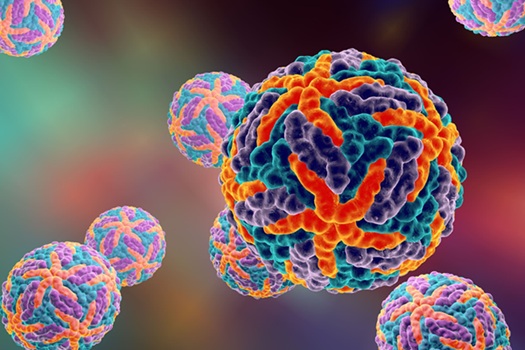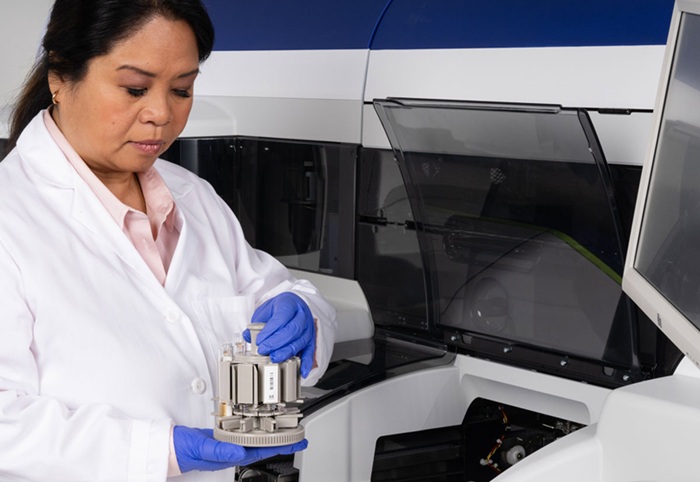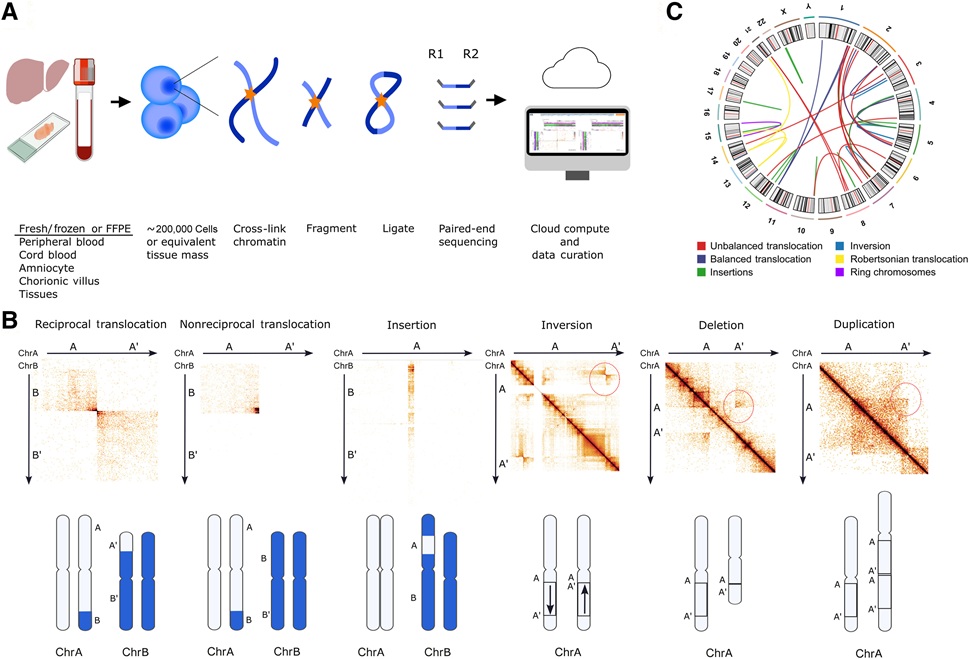Biggest European Biotech Show Creates Strong Impression
|
By LabMedica International staff writers Posted on 21 Oct 2010 |
Biotechnica 2010, a European networking hub for industry and science, demonstrated a stronger rate of participation from abroad, higher ratio of trade visitors, and the conference program's innovative content created a strong impression.
Drawing to a successful close, Biotechnica 2010 (Hannover, Germany), held October 5-7, in Hannover, Germany, has generated a positive tone in the international life science industry. "Biotechnica has demonstrated the importance of biotechnology to all areas of life as well as the economy," commented Stephan Ph. Kühne, member of the managing board of Deutsche Messe, AG, Hannover, at the end of Europe's biggest biotechnology and life science exhibition. "It has once again underscored its status as a networking hub for industry and science," he added. "Many exhibitors are leaving Hannover with a sense of optimism and fresh ideas for brisk post-show business. Now the task at hand is to also convince the broad public of the great potential offered by biotechnology."
More than 9,500 visitors from 40 different nations attended Biotechnica to find out about the latest biotechnology trends in the fields of healthcare, food production, industry, environmental protection, lab equipment, and bioinformatics--as well as to transact new business deals. "In view of framework conditions currently affecting the biotech industry, this is a solid outcome indeed," reported Mr. Kühne. "The high caliber of the visiting professionals and the large number of exhibitors from abroad, as well as the presence of international market leaders, has instilled a sense of optimism in the industry. Biotechnica was a worthwhile experience for exhibitors and visitors alike," he concluded.
This interpretation was shared by Claus-Dieter Kroggel, head of the central office of Fraunhofer ITEM, Hannover, "Biotechnica is Europe's essential bioengineering exhibition. We come here regularly to assert our presence in the marketplace. We are primarily interested in cultivating existing contacts and meeting new customers. Here we can also reach our important industrial clients. We have already booked our stand for next year."
The exhibitor lineup at Biotechnica 2010--with some 500 enterprises from 23 different nations--was equal to that of the most recent comparable event staged back in 2008. The turnout by foreign exhibitors was very high, at 32%. Switzerland was the country with the largest contingent of foreign exhibitors, followed by the United States, France, the United Kingdom, and the Netherlands.
Exhibitors reported that their main objectives for appearing at Biotechnica were to generate new leads among potential business partners as well as to cultivate existing customer contacts. Approximately 25% of visitors came from abroad--5% more than the previous year. Attendance was up from Europe, above all from the United Kingdom, The Netherlands, and France, but also from the United States and Russia. The biggest visitor nations consisted of the United Kingdom, the Netherlands, France, Switzerland, and the United States.
Some 5,000 visitors came from the R&D and scientific sector. Their key motivations for attending the event were to gain a general market overview, take note of the latest innovations and to get in touch with potential cooperation partners. Visitors were particularly interested in the sectors of biotechnology, lab equipment, and pharmaceutical/medical applications; 72% of the professionals in attendance indicated having purchasing authority at their companies. The share of visitors with decisive procurement authority was up a considerable 10% compared with previous events. The rate of visitors from higher management echelons (22%) was at an all-time high.
More than 500 speakers worldwide made the conference program a special emphasis at Biotechnica. The show's conferences, forums, and workshops drew attendance by over 3,000. This year's range of topics extended from biomedicine and bioinformatics to the food markets of the future.
For the first time ever, Molecular Diagnostics Europe--a conference and special display-- was staged as an integral event at Biotechnica. The focus was on automatic testing systems for the rapid and precise diagnostics of cancer and infectious diseases. Among other themes covered at the Biotechnica conferences were innovative information technology (IT) solutions for biotech research, the development of new proteins to combat cancer and chronic infections, and food production and security. Additional visitor magnets included stem cell research, biobanks, and forensics.
Moreover, company founders had an opportunity to make a presentation before an audience of potential investors at the Bio@Venture Conference. At press time, the bone-tec 2010 congress--focusing on the use of bioengineering to regenerate bone, gristle, sinews, and ligaments--was focused on another successful staging. For the first time, the World Congress for Preventive and Regenerative Medicine was held concurrently with Biotechnica, featuring researchers presenting the latest therapeutic approaches to treating skin, bone and wound pathology.
Biotechnica served as a networking hub for experts and opinion leaders from business, science, research and government--all of whom exercise a decisive influence on the future of European biotechnology. The leading political decision-maker for pan-European health care policy, European Union (EU) commissioner John Dalli, also attended the event in Hannover.
A key objective of Biotechnica involves the integration of science and industry. The Berlin-based Federal Ministry for Education and Research (BMBF) presented research projects completed in 2009 at the biotechnology projects forum. Some 120 researchers were on hand during the three-day show to speak with visitors and answer their questions. The Biotechnica Innovation Forums, which were staged directly in the exhibition hall amid the exhibitor and product presentations, were particularly well attended.
The Biotechnica Partnering program brought together potential partners from 33 different nations. A total of 285 participants took part in some 650 face-to-face meetings aimed at finding the right collaboration partners. This outcome reflected the 26% rise in the number of meetings held, and 20% increase in the number of participants. The jobvector career day also met with a big response; 15 enterprises appeared before numerous applicants to advertise for the right specialists.
Carrying a prize purse of EUR 75,000, the European Biotechnica Award was presented at the event. The winner was Galapagos, NV (Mechelen, Belgium). The company specializes in research and development of antibody and small molecular therapies for the treatment of various diseases such as cancer, diabetes, or Alzheimer's disease.
The next Biotechnica will be held October 11-13, 2011.
Related Links:
Biotechnica 2010
Drawing to a successful close, Biotechnica 2010 (Hannover, Germany), held October 5-7, in Hannover, Germany, has generated a positive tone in the international life science industry. "Biotechnica has demonstrated the importance of biotechnology to all areas of life as well as the economy," commented Stephan Ph. Kühne, member of the managing board of Deutsche Messe, AG, Hannover, at the end of Europe's biggest biotechnology and life science exhibition. "It has once again underscored its status as a networking hub for industry and science," he added. "Many exhibitors are leaving Hannover with a sense of optimism and fresh ideas for brisk post-show business. Now the task at hand is to also convince the broad public of the great potential offered by biotechnology."
More than 9,500 visitors from 40 different nations attended Biotechnica to find out about the latest biotechnology trends in the fields of healthcare, food production, industry, environmental protection, lab equipment, and bioinformatics--as well as to transact new business deals. "In view of framework conditions currently affecting the biotech industry, this is a solid outcome indeed," reported Mr. Kühne. "The high caliber of the visiting professionals and the large number of exhibitors from abroad, as well as the presence of international market leaders, has instilled a sense of optimism in the industry. Biotechnica was a worthwhile experience for exhibitors and visitors alike," he concluded.
This interpretation was shared by Claus-Dieter Kroggel, head of the central office of Fraunhofer ITEM, Hannover, "Biotechnica is Europe's essential bioengineering exhibition. We come here regularly to assert our presence in the marketplace. We are primarily interested in cultivating existing contacts and meeting new customers. Here we can also reach our important industrial clients. We have already booked our stand for next year."
The exhibitor lineup at Biotechnica 2010--with some 500 enterprises from 23 different nations--was equal to that of the most recent comparable event staged back in 2008. The turnout by foreign exhibitors was very high, at 32%. Switzerland was the country with the largest contingent of foreign exhibitors, followed by the United States, France, the United Kingdom, and the Netherlands.
Exhibitors reported that their main objectives for appearing at Biotechnica were to generate new leads among potential business partners as well as to cultivate existing customer contacts. Approximately 25% of visitors came from abroad--5% more than the previous year. Attendance was up from Europe, above all from the United Kingdom, The Netherlands, and France, but also from the United States and Russia. The biggest visitor nations consisted of the United Kingdom, the Netherlands, France, Switzerland, and the United States.
Some 5,000 visitors came from the R&D and scientific sector. Their key motivations for attending the event were to gain a general market overview, take note of the latest innovations and to get in touch with potential cooperation partners. Visitors were particularly interested in the sectors of biotechnology, lab equipment, and pharmaceutical/medical applications; 72% of the professionals in attendance indicated having purchasing authority at their companies. The share of visitors with decisive procurement authority was up a considerable 10% compared with previous events. The rate of visitors from higher management echelons (22%) was at an all-time high.
More than 500 speakers worldwide made the conference program a special emphasis at Biotechnica. The show's conferences, forums, and workshops drew attendance by over 3,000. This year's range of topics extended from biomedicine and bioinformatics to the food markets of the future.
For the first time ever, Molecular Diagnostics Europe--a conference and special display-- was staged as an integral event at Biotechnica. The focus was on automatic testing systems for the rapid and precise diagnostics of cancer and infectious diseases. Among other themes covered at the Biotechnica conferences were innovative information technology (IT) solutions for biotech research, the development of new proteins to combat cancer and chronic infections, and food production and security. Additional visitor magnets included stem cell research, biobanks, and forensics.
Moreover, company founders had an opportunity to make a presentation before an audience of potential investors at the Bio@Venture Conference. At press time, the bone-tec 2010 congress--focusing on the use of bioengineering to regenerate bone, gristle, sinews, and ligaments--was focused on another successful staging. For the first time, the World Congress for Preventive and Regenerative Medicine was held concurrently with Biotechnica, featuring researchers presenting the latest therapeutic approaches to treating skin, bone and wound pathology.
Biotechnica served as a networking hub for experts and opinion leaders from business, science, research and government--all of whom exercise a decisive influence on the future of European biotechnology. The leading political decision-maker for pan-European health care policy, European Union (EU) commissioner John Dalli, also attended the event in Hannover.
A key objective of Biotechnica involves the integration of science and industry. The Berlin-based Federal Ministry for Education and Research (BMBF) presented research projects completed in 2009 at the biotechnology projects forum. Some 120 researchers were on hand during the three-day show to speak with visitors and answer their questions. The Biotechnica Innovation Forums, which were staged directly in the exhibition hall amid the exhibitor and product presentations, were particularly well attended.
The Biotechnica Partnering program brought together potential partners from 33 different nations. A total of 285 participants took part in some 650 face-to-face meetings aimed at finding the right collaboration partners. This outcome reflected the 26% rise in the number of meetings held, and 20% increase in the number of participants. The jobvector career day also met with a big response; 15 enterprises appeared before numerous applicants to advertise for the right specialists.
Carrying a prize purse of EUR 75,000, the European Biotechnica Award was presented at the event. The winner was Galapagos, NV (Mechelen, Belgium). The company specializes in research and development of antibody and small molecular therapies for the treatment of various diseases such as cancer, diabetes, or Alzheimer's disease.
The next Biotechnica will be held October 11-13, 2011.
Related Links:
Biotechnica 2010
Latest BioResearch News
- Genome Analysis Predicts Likelihood of Neurodisability in Oxygen-Deprived Newborns
- Gene Panel Predicts Disease Progession for Patients with B-cell Lymphoma
- New Method Simplifies Preparation of Tumor Genomic DNA Libraries
- New Tool Developed for Diagnosis of Chronic HBV Infection
- Panel of Genetic Loci Accurately Predicts Risk of Developing Gout
- Disrupted TGFB Signaling Linked to Increased Cancer-Related Bacteria
- Gene Fusion Protein Proposed as Prostate Cancer Biomarker
- NIV Test to Diagnose and Monitor Vascular Complications in Diabetes
- Semen Exosome MicroRNA Proves Biomarker for Prostate Cancer
- Genetic Loci Link Plasma Lipid Levels to CVD Risk
- Newly Identified Gene Network Aids in Early Diagnosis of Autism Spectrum Disorder
- Link Confirmed between Living in Poverty and Developing Diseases
- Genomic Study Identifies Kidney Disease Loci in Type I Diabetes Patients
- Liquid Biopsy More Effective for Analyzing Tumor Drug Resistance Mutations
- New Liquid Biopsy Assay Reveals Host-Pathogen Interactions
- Method Developed for Enriching Trophoblast Population in Samples
Channels
Clinical Chemistry
view channel
VOCs Show Promise for Early Multi-Cancer Detection
Early cancer detection is critical to improving survival rates, but most current screening methods focus on individual cancer types and often involve invasive procedures. This makes it difficult to identify... Read more
Portable Raman Spectroscopy Offers Cost-Effective Kidney Disease Diagnosis at POC
Kidney disease is typically diagnosed through blood or urine tests, often when patients present with symptoms such as blood in urine, shortness of breath, or weight loss. While these tests are common,... Read moreMolecular Diagnostics
view channel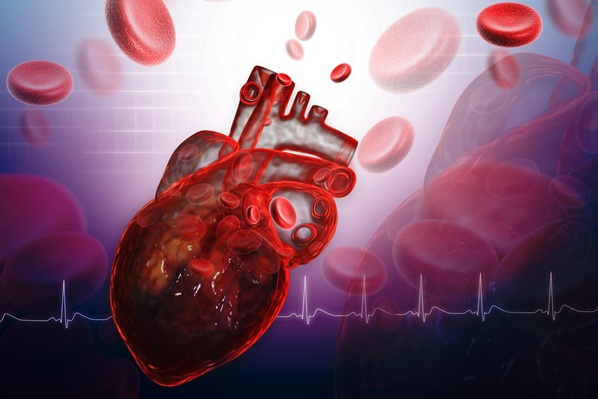
New Biomarker Panel to Improve Heart Failure Diagnosis in Women
Heart failure affects millions worldwide, yet many women are still misdiagnosed or diagnosed too late. Although heart failure broadly means the heart cannot pump enough blood to the body’s cells, its two... Read more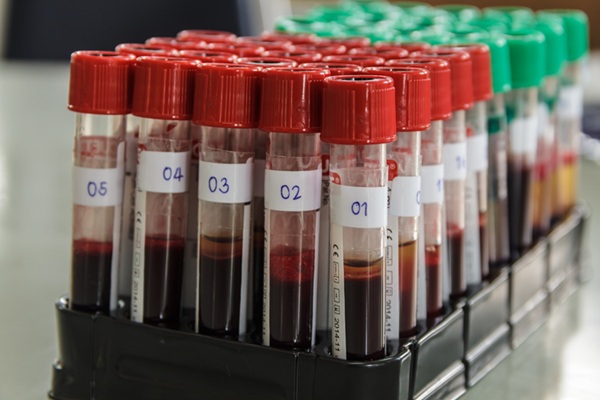
Dual Blood Biomarkers Improve ALS Diagnostic Accuracy
Diagnosing amyotrophic lateral sclerosis (ALS) remains difficult even with advanced imaging and genetic tools, especially when clinicians must distinguish it from other neurodegenerative conditions that... Read moreHematology
view channel
ADLM’s New Coagulation Testing Guidance to Improve Care for Patients on Blood Thinners
Direct oral anticoagulants (DOACs) are one of the most common types of blood thinners. Patients take them to prevent a host of complications that could arise from blood clotting, including stroke, deep... Read more
Viscoelastic Testing Could Improve Treatment of Maternal Hemorrhage
Postpartum hemorrhage, severe bleeding after childbirth, remains one of the leading causes of maternal mortality worldwide, yet many of these deaths are preventable. Standard care can be hindered by delays... Read more
Pioneering Model Measures Radiation Exposure in Blood for Precise Cancer Treatments
Scientists have long focused on protecting organs near tumors during radiotherapy, but blood — a vital, circulating tissue — has largely been excluded from dose calculations. Each blood cell passing through... Read moreImmunology
view channel
Chip Captures Cancer Cells from Blood to Help Select Right Breast Cancer Treatment
Ductal carcinoma in situ (DCIS) accounts for about a quarter of all breast cancer cases and generally carries a good prognosis. This non-invasive form of the disease may or may not become life-threatening.... Read more
Blood-Based Liquid Biopsy Model Analyzes Immunotherapy Effectiveness
Immunotherapy has revolutionized cancer care by harnessing the immune system to fight tumors, yet predicting who will benefit remains a major challenge. Many patients undergo costly and taxing treatment... Read moreMicrobiology
view channel
15-Minute Blood Test Diagnoses Life-Threatening Infections in Children
Distinguishing minor childhood illnesses from potentially life-threatening infections such as sepsis or meningitis remains a major challenge in emergency care. Traditional tests can take hours, leaving... Read more
High-Throughput Enteric Panels Detect Multiple GI Bacterial Infections from Single Stool Swab Sample
Gastrointestinal (GI) infections are among the most common causes of illness worldwide, leading to over 1.7 million deaths annually and placing a heavy burden on healthcare systems. Conventional diagnostic... Read morePathology
view channel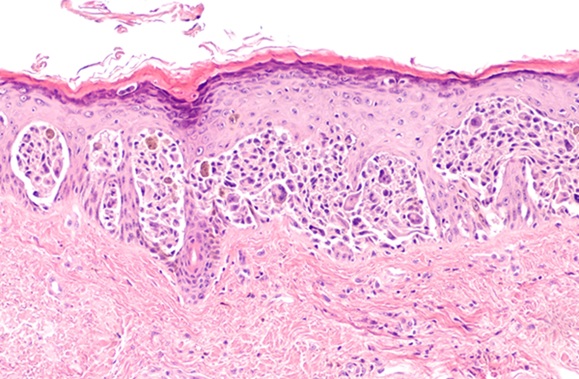
AI Tool Improves Accuracy of Skin Cancer Detection
Diagnosing melanoma accurately in people with darker skin remains a longstanding challenge. Many existing artificial intelligence (AI) tools detect skin cancer more reliably in lighter skin tones, often... Read more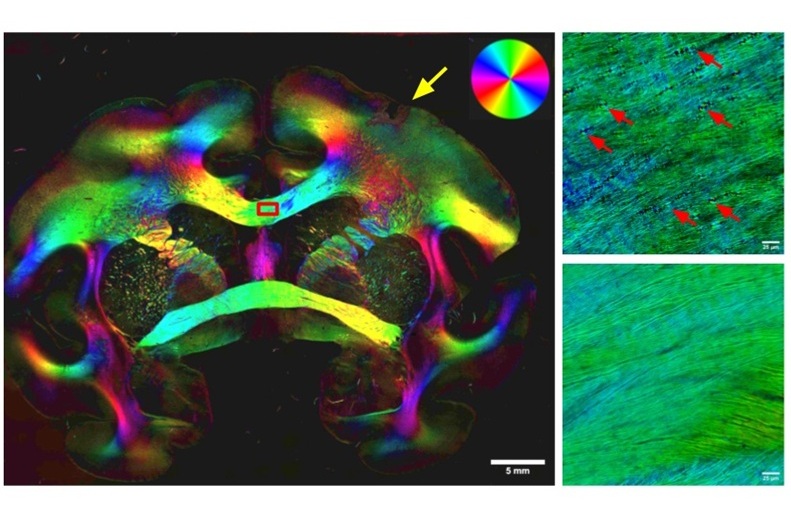
Highly Sensitive Imaging Technique Detects Myelin Damage
Damage to myelin—the insulating layer that helps brain cells function efficiently—is a hallmark of many neurodegenerative diseases, age-related decline, and traumatic injuries. However, studying this damage... Read moreTechnology
view channel
AI Model Achieves Breakthrough Accuracy in Ovarian Cancer Detection
Early diagnosis of ovarian cancer remains one of the toughest challenges in women’s health. Traditional tools such as the Risk of Ovarian Malignancy Algorithm (ROMA) can struggle to distinguish between... Read more
Portable Biosensor Diagnoses Psychiatric Disorders Using Saliva Samples
Early diagnosis of psychiatric disorders such as depression, schizophrenia, and bipolar disorder remains one of medicine’s most pressing challenges. Current diagnostic methods rely heavily on clinical... Read more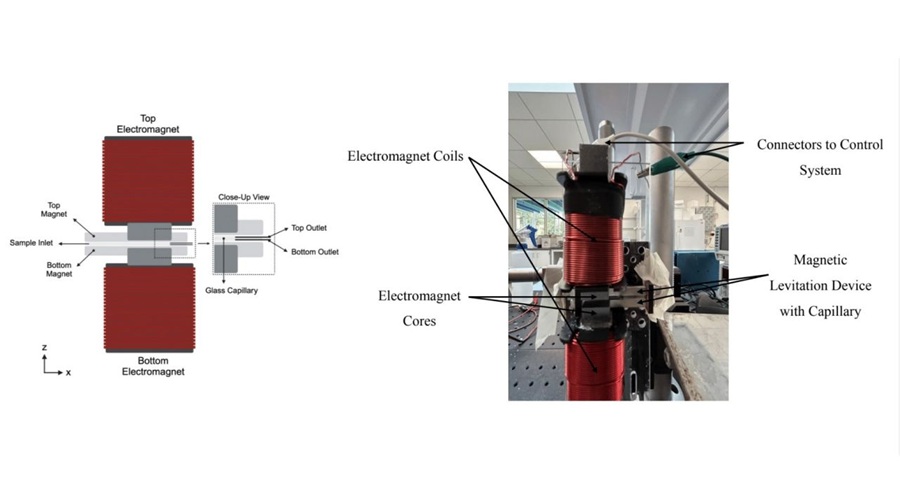
Cell-Sorting Device Uses Electromagnetic Levitation to Precisely Direct Cell Movement
Sorting different cell types—such as cancerous versus healthy or live versus dead cells—is a critical task in biology and medicine. However, conventional methods often require labeling, chemical exposure,... Read moreIndustry
view channel
Co-Diagnostics Forms New Business Unit to Develop AI-Powered Diagnostics
Co-Diagnostics, Inc. (Salt Lake City, UT, USA) has formed a new artificial intelligence (AI) business unit to integrate the company's existing and planned AI applications into its Co-Dx Primer Ai platform.... Read more













